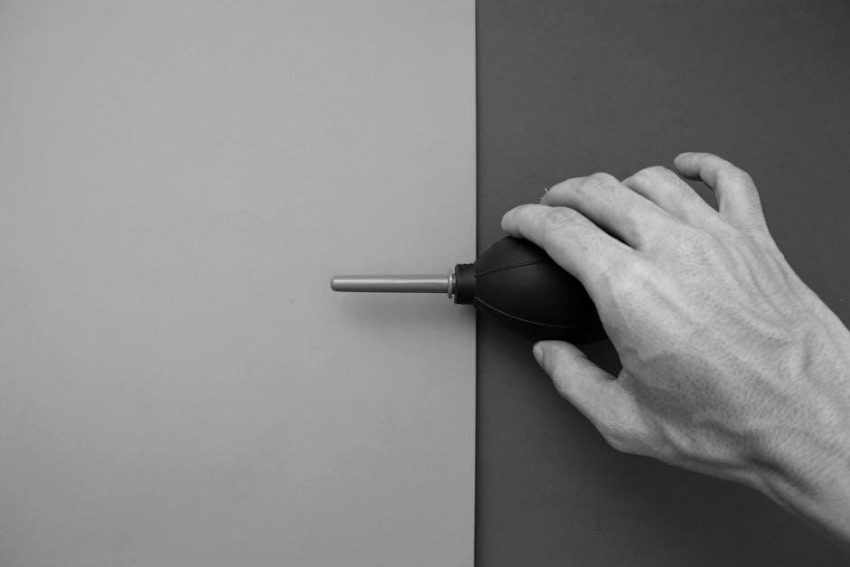Welcome to the Simpson Pressure Washer owner’s manual․ This guide provides detailed instructions for safe operation, assembly, and maintenance of your pressure washer․
1․1 Overview of the Simpson Pressure Washer
The Simpson Pressure Washer is a durable and portable cleaning solution designed for various tasks․ It features a powerful engine, high-pressure output, and interchangeable nozzle tips for versatility․ With models like the MSV2700 and Premium series, it caters to both residential and commercial needs․ The washer is built for efficiency, offering easy setup and operation․ This guide provides a comprehensive overview of its features, capabilities, and essential information to ensure optimal performance․ By following the manual, users can maximize the potential of their Simpson Pressure Washer while maintaining safety and longevity․
1․2 Importance of Reading the Owner’s Manual
Reading the owner’s manual is crucial for safe and effective use of your Simpson Pressure Washer․ It provides essential information on assembly, operation, and maintenance, helping you avoid potential hazards․ The manual outlines safety precautions, such as operating in well-ventilated areas and avoiding explosive environments, to prevent accidents․ Additionally, it offers troubleshooting tips and guidance on winterizing the unit․ By understanding the manual, you can ensure optimal performance, extend the product’s lifespan, and comply with warranty requirements․ Always refer to the manual before operating your pressure washer to guarantee a safe and satisfactory experience․ Proper maintenance and adherence to guidelines are key to maximizing its efficiency and longevity․

Safety Guidelines
Adhere to safety guidelines to ensure safe operation․ Wear protective gear, avoid hazards, and follow proper usage to prevent injuries and equipment damage․
2․1 General Safety Precautions
Always wear protective gear, including gloves, safety goggles, and closed-toe shoes, to minimize injury risks․ Ensure the area is clear of obstacles and flammable materials․ Never operate the pressure washer near open flames or sparks․ Keep children and pets away during use․ Avoid spraying electrical components or sensitive surfaces․ Use the correct nozzle for the task to prevent damage or ricochet․ Regularly inspect hoses and connections for wear or damage․ Ensure the machine is on a stable, level surface before operation․ Follow all local safety regulations and guidelines․
Before starting, check the pressure washer’s components for proper function․ Avoid overreaching or using excessive force, which can cause loss of control․ Keep the spray gun secured with the safety latch when not in use․ Do not modify the equipment or use unauthorized accessories; Stay alert and avoid fatigue while operating the machine․ Properly shut down the unit and allow it to cool before storage or maintenance․ Always refer to the manual for specific safety recommendations․
2․2 Safety Warnings for Operation
Never aim the pressure washer nozzle at people, animals, or delicate surfaces like windows or paint․ Avoid using high-pressure settings on fragile materials․ Keep loose clothing and long hair tied back to prevent entanglement․ Do not operate the unit in wet conditions or during rain to avoid electrical hazards․ Ensure the spray gun trigger is released and the engine is off before leaving the machine unattended․ Avoid using the pressure washer near open flames or sparks, as certain models may produce static electricity․ Always maintain a firm grip on the spray gun to prevent loss of control․
Do not use the pressure washer at extreme angles or upside down, as this can cause mechanical damage․ Keep the nozzle at least 12 inches away from surfaces to avoid excessive wear or damage․ Never modify the equipment or bypass safety features․ If the machine malfunctions, stop use immediately and consult the manual or contact support․ Always follow the recommended pressure settings for specific tasks to ensure safe and effective operation․
2․3 Emergency Procedures
In case of an emergency, immediately shut off the engine and disconnect the power supply․ If the engine does not stop, release the spray gun trigger and ensure the pump is not under pressure․ For accidental exposure to high-pressure spray, flush the affected area with clean water and seek medical attention if necessary․ If a chemical leak occurs, evacuate the area, wear protective gear, and ventilate thoroughly․ Never attempt to repair a damaged hose or fitting while the unit is operational․ In case of an electrical malfunction, avoid using water to extinguish sparks and contact a certified technician immediately․
Always keep a fire extinguisher nearby and ensure proper ventilation when operating in enclosed spaces․ If the pressure washer tips over, turn it off and inspect for damage before restarting․ For any injury or equipment damage, document the incident and refer to the warranty information for potential claims․ Store the unit in a secure, dry location to prevent accidental activation or tampering․
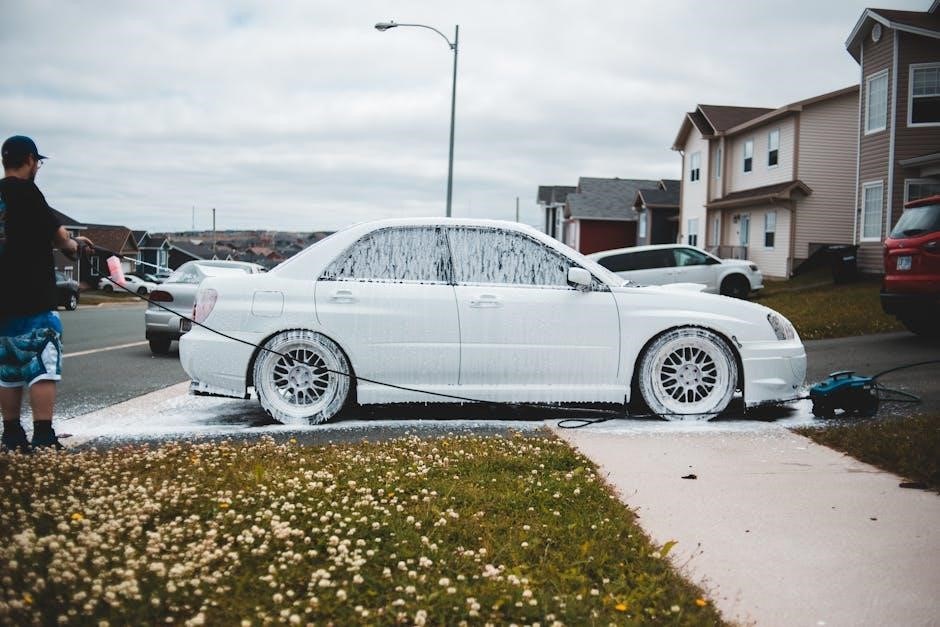
Assembly and Initial Setup
Unbox and inventory all parts, ensuring no components are damaged․ Follow step-by-step instructions to assemble the pressure washer, attaching handles, hoses, and nozzles securely․ Conduct initial checks for leaks and proper connections before first use․
3․1 Unboxing and Inventory of Parts
Begin by carefully unboxing the Simpson pressure washer to avoid damaging any components․ Check the contents against the provided parts list to ensure all items are included․ Inspect each part for visible damage or defects․ Key components include the engine, pump, hose, spray gun, and nozzle tips․ Additional items like bolts, washers, and adapters should also be accounted for․ If any parts are missing or damaged, contact customer support immediately․ Organize the parts neatly to prevent misplacement․ Proper inventory ensures a smooth assembly process and prevents delays in getting your pressure washer operational․
3․2 Step-by-Step Assembly Instructions
Begin by attaching the handle to the frame using the provided bolts․ Ensure all connections are tightened securely․ Next, install the wheels by aligning the axles and fastening with the supplied nuts․ Connect the hose to the pump and spray gun, making sure all fittings are snug․ Mount the hose reel to the frame and wrap the hose neatly․ Finally, attach the nozzle tips to the spray gun․ Double-check all connections for tightness and proper alignment․ Refer to the parts diagram for visual guidance․ Assembly should take approximately 30 minutes with basic tools like a wrench and screwdriver․
3․3 Initial Checks Before First Use
Before operating your Simpson pressure washer, inspect all components for damage or wear․ Check the oil level in the engine and ensure it is at the recommended level․ Verify that all hoses and connections are secure and free of leaks․ Test the spray gun trigger to ensure proper operation․ Make sure the nozzle tip is correctly attached and aligned․ Check the pressure setting to ensure it matches the task at hand․ Finally, ensure the area is clear of debris and flammable materials․ Refer to the manual for specific guidelines to ensure safe and effective operation․

Operating the Pressure Washer
Start the engine, adjust pressure settings, and use the spray gun to clean surfaces․ Monitor the machine’s performance and adjust as needed for optimal cleaning results safely․
4․1 Starting the Pressure Washer
Place the pressure washer on a level surface and ensure all connections are secure․ Check the oil level and add the recommended oil if necessary․ Prime the pump by pressing the primer bulb several times to ensure water flows through the system․ Pull the recoil starter firmly to start the engine; you may need to adjust the choke if the engine is cold․ Allow the engine to run for about a minute before using the spray gun․ Always wear eye protection and ensure the area is clear․ Follow proper starting procedures for optimal performance and safety․
4․2 Adjusting Pressure Settings
To adjust the pressure settings on your Simpson pressure washer, locate the pressure adjustment knob on the pump or control panel․ Turn the knob clockwise to increase pressure and counterclockwise to decrease it․ Use the pressure gauge to monitor the current setting․ Always start with a lower setting for delicate surfaces and increase as needed․ For specific tasks, refer to the recommended pressure levels in the manual․ Avoid exceeding the maximum pressure rating to prevent damage․ Ensure the correct nozzle tip is installed for the selected pressure setting to maintain efficiency and safety during operation․
4․3 Using Different Nozzle Tips
Your Simpson pressure washer comes with interchangeable nozzle tips designed for specific cleaning tasks․ The most common nozzles include a wide fan tip for large areas, a narrow tip for tough stains, and a zero-degree tip for precise cleaning․ To change tips, press the quick-connect coupler firmly and twist until it locks․ Always use the correct nozzle for the job to ensure efficiency and avoid damaging surfaces․ For example, the wide fan tip is ideal for decking, while the narrow tip is better for concrete․ Regularly inspect nozzles for wear and replace as needed to maintain performance․ Store tips securely when not in use․

Maintenance and Care
Regular maintenance extends lifespan and ensures optimal performance․ Check hoses for damage, clean regularly, and store properly to protect against wear and environmental factors;
5․1 Regular Maintenance Schedule
Follow a routine maintenance schedule to ensure your Simpson pressure washer performs optimally․ Check oil and fuel levels before each use and top them off as needed․ Inspect hoses, connections, and nozzles monthly for wear or damage․ Clean or replace the filter every 50 hours of operation․ Change the engine oil every 50 hours to maintain proper lubrication․ Check and tighten all bolts and belts every 100 hours․ Inspect the spark plug annually and replace it if necessary․ Regular maintenance prevents breakdowns and extends the lifespan of your pressure washer․
5․2 Cleaning and Storage Tips
Regularly clean your Simpson pressure washer to maintain performance and longevity․ After each use, rinse the machine with clean water to remove dirt and debris․ Use a mild soap solution to wipe down the exterior, avoiding harsh chemicals․ Store the pressure washer in a dry, well-ventilated area, away from direct sunlight․ Drain the fuel tank and hoses during winter months to prevent damage․ Check hoses for cracks or damage and store them on a reel to avoid kinks․ Proper cleaning and storage ensure your pressure washer remains in excellent condition for years of reliable service․
- Clean after each use to prevent debris buildup․
- Store in a dry, protected area to avoid damage․
- Drain fuel and hoses during winter storage․
5․3 Winterizing the Pressure Washer
To winterize your Simpson pressure washer, drain all fuel and water from the system to prevent freezing damage․ Add a fuel stabilizer to the tank to maintain fuel quality during storage․ Disconnect and drain the hoses, then store them in a protected area․ Apply pump saver or antifreeze to the pump to protect it from freezing temperatures․ Cover the unit to shield it from moisture and debris․ Store in a dry, climate-controlled environment to ensure optimal condition for the next use․ Proper winterization extends the lifespan and maintains performance of your pressure washer․
- Drain all fuel and water to avoid freezing․
- Add fuel stabilizer and pump saver․
- Store in a dry, protected location․
Troubleshooting Common Issues
Identify symptoms, consult the manual, and address issues promptly․ Common problems include engine failure, low pressure, and leaks․ Check fuel, connections, and wear parts for solutions․
- Engine issues? Ensure proper fuel and air supply․
- Low pressure? Check for blockages or damaged hoses․
6․1 Engine Not Starting
If the engine fails to start, check the fuel level and ensure the tank is not empty․ Verify the oil level is adequate and the oil cap is securely tightened․ Inspect the air filter for dirt or blockages and clean or replace it as needed․ Ensure the spark plug is properly connected and not damaged․ Check the choke position and throttle settings․ If issues persist, refer to the troubleshooting guide or consult a professional․ Always follow safety guidelines when diagnosing engine problems․
- Check fuel and oil levels․
- Inspect air filter and spark plug․
- Ensure proper choke and throttle settings․
6․2 Low Pressure Output
Low pressure output can result from clogged nozzles, kinked or damaged hoses, or improper detergent use․ Inspect the nozzle for blockages and clean it with a small brush or needle․ Check hoses for kinks or damage and replace if necessary․ Ensure the correct detergent is used, as improper types can reduce pressure․ Verify all connections are tight and free of leaks․ If issues persist, adjust the pressure setting or consult the troubleshooting guide for further assistance․ Proper maintenance and regular checks can help maintain optimal pressure performance․
- Inspect nozzles for blockages․
- Check hoses for kinks or damage․
- Use the correct detergent type․
- Ensure tight, leak-free connections․
6․3 Leaks and Other Common Problems
Leaks often occur due to loose connections, damaged seals, or worn O-rings․ Inspect hoses, couplers, and pump connections for damage or gaps․ Tighten any loose fittings and replace damaged seals or O-rings․ Other common issues include overheating, which can occur from prolonged use without cooldown periods, and excessive vibration, caused by improper balancing․ Address these by following cooldown procedures and ensuring the unit is level․ Regular inspection and maintenance can prevent these issues․ Always refer to the parts diagram for replacement parts and follow proper repair procedures to ensure safety and optimal performance․
- Check connections for tightness․
- Inspect for damaged seals or O-rings․
- Address overheating with cooldown periods․
- Ensure the unit is properly balanced․

Parts Diagram and Catalogue
The parts diagram provides a visual guide to identify components, while the catalogue lists replacement parts with descriptions and order codes for easy reference and procurement․
7․1 Understanding the Parts Diagram
The parts diagram is a detailed visual representation of the Simpson pressure washer’s components, helping users identify and locate each part․ It is divided into sections, such as the engine, pump, and spray gun, with numbered labels corresponding to descriptions in the catalogue․ The diagram is essential for ordering replacement parts accurately and performing repairs․ Referencing the diagram ensures proper identification of components, reducing errors during maintenance․ It is typically found in the manual or online, providing a clear, organized layout for easy navigation․ Understanding the parts diagram is crucial for effective troubleshooting and ensuring the pressure washer operates at peak performance․
7․2 Ordering Replacement Parts
Ordering replacement parts for your Simpson pressure washer is straightforward when using the parts diagram and catalogue․ Identify the specific part number from the diagram and refer to the catalogue for pricing and availability․ Visit the official Simpson website or authorized dealers to place your order․ Ensure to provide the correct model number and part number to avoid errors․ Payments can be made securely online, and shipping options vary based on location․ Genuine Simpson parts are recommended to maintain performance and warranty validity․ Keep a record of your order for future reference and track your shipment through provided tracking information․ Always verify part compatibility before purchasing to ensure proper fitment and function․
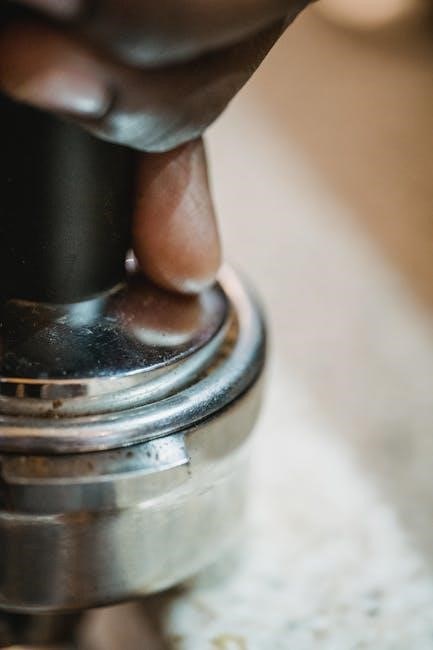
Advanced Features
Explore advanced features like variable pressure control, detergent injection, and quiet operation, enhancing efficiency and versatility for diverse cleaning tasks․
8․1 Using the Pressure Washer for Specific Tasks
The Simpson pressure washer excels at various tasks, from cleaning driveways to preparing surfaces for painting․ For heavy-duty cleaning, such as removing grease or grime, use the narrow nozzle tip with high pressure․ For delicate surfaces like siding or vehicles, opt for a wide fan tip to avoid damage․ Always adjust the pressure setting according to the task to ensure efficiency and prevent surface wear․ Regularly inspect nozzles for wear and replace them as needed to maintain optimal performance․ This versatility makes the Simpson pressure washer a reliable tool for multiple cleaning applications around the house or workplace․
8․2 Customizing Settings for Different Surfaces
Customizing pressure washer settings ensures safe and effective cleaning for various surfaces․ For concrete or brick, use higher pressure with a narrow nozzle tip․ For wood decks, reduce pressure to avoid damage and use a wide fan tip; Vehicles and delicate surfaces like siding require low pressure and a soft-bristle brush attachment․ Adjust detergent flow based on dirt levels and surface type․ Always test a small area first to ensure settings won’t damage the material․ Refer to the manual for recommended pressure ranges and nozzle tips for specific surfaces to achieve the best cleaning results without causing harm․
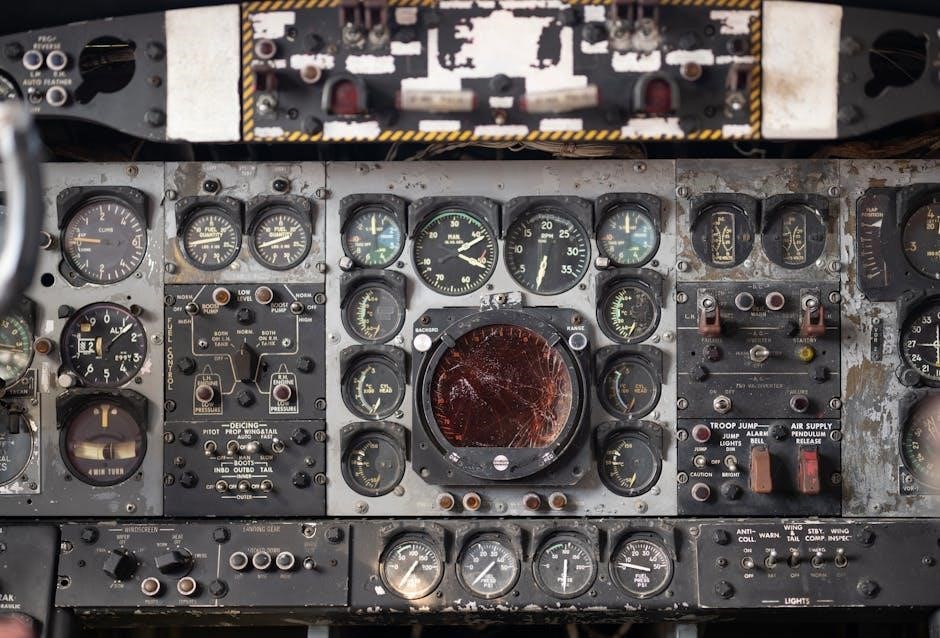
Environmental Considerations
Always operate the pressure washer in well-ventilated areas to prevent fume buildup․ Avoid using it near open flames or explosive environments․ Comply with local regulations and eco-friendly practices to minimize environmental impact․
9․1 Operating in Well-Ventilated Areas
Always operate the Simpson pressure washer in well-ventilated areas to avoid inhaling harmful fumes from gasoline or exhaust․ Keep windows and doors open if using the machine indoors․ Ensure proper airflow to prevent carbon monoxide buildup․ Avoid operating the pressure washer in enclosed or poorly ventilated spaces, as this can lead to dangerous conditions․ If you notice dizziness or nausea, stop use immediately and move to fresh air․ Proper ventilation ensures safe operation and protects your health while using the equipment․
9․2 Avoiding Explosive Environments
Never operate the Simpson pressure washer in areas where explosive or flammable materials are present․ Avoid using the machine near gasoline, paint fumes, or combustible dust․ Do not operate in environments with open flames, sparks, or hot surfaces, as this could ignite flammable vapors․ Ensure the area is free from chemicals or other hazardous substances․ Turn off the engine and allow it to cool before refueling or storing near flammable materials․ Always check for potential fire hazards and maintain a safe distance from ignition sources to prevent accidents․ Operating in explosive environments can lead to severe injury or property damage․
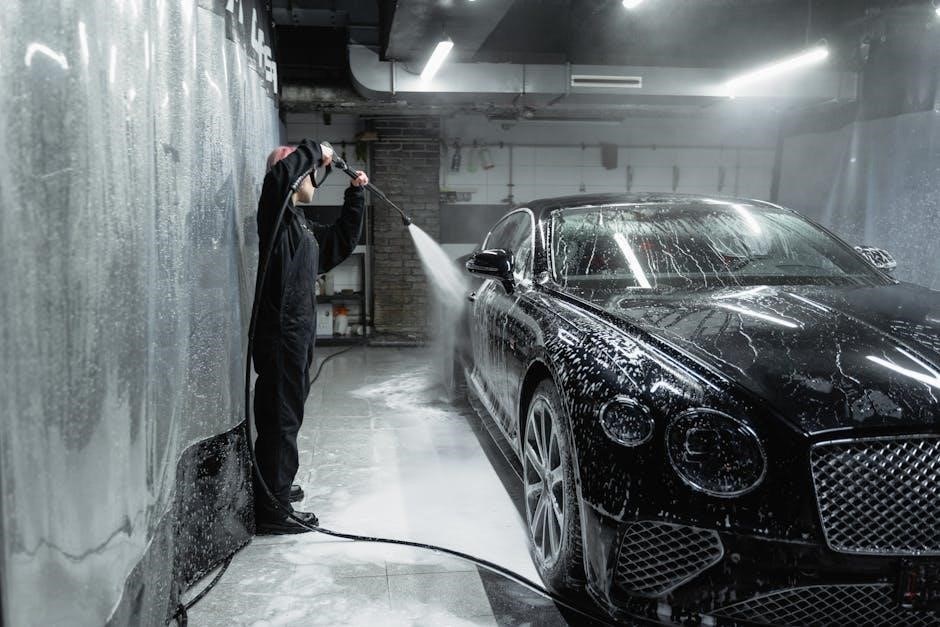
Warranty and Support
Your Simpson pressure washer is backed by a comprehensive warranty․ For details, visit the official website or contact customer support for assistance and inquiries․
10․1 Warranty Information
Your Simpson pressure washer is protected by a limited warranty covering defects in materials and workmanship․ The warranty period varies by component: 2-3 years for the engine, 1-2 years for the pump, and 90 days for accessories․ Coverage applies to residential use; commercial use may have shorter terms․ Warranty is non-transferable and requires proper registration within 30 days of purchase․ Unauthorized modifications or misuse void coverage․ For full details, refer to the official manual or contact Simpson’s customer support․ Keeping your proof of purchase is essential for warranty claims․
10․2 Contacting Customer Support
For assistance with your Simpson pressure washer, contact customer support through multiple channels․ Call their toll-free number, available Monday–Friday, 8 AM–5 PM CT․ Email inquiries can be sent directly to their support team․ Visit their official website for live chat support or to submit a support ticket․ Additional resources, such as FAQs and troubleshooting guides, are also available online․ For faster service, have your model number and serial number ready․ Simpson’s dedicated team aims to resolve issues promptly and ensure optimal performance of your pressure washer․

Downloading the Manual
Visit Simpson’s official website to download the owner’s manual․ Navigate to the support section, enter your model number, and access the PDF guide instantly․
11․1 Where to Find the Manual Online
To access the Simpson Pressure Washer owner’s manual, visit the official Simpson website․ Navigate to the “Support” or “Resources” section․ Click on “Manuals & Guides” and enter your specific model number in the search bar․ Select the correct model to view and download the PDF version of the manual․ Ensure you download the manual corresponding to your exact pressure washer model for accurate information․ The manual is available free of charge and can be accessed at any time․ Always download from Simpson’s official website to ensure authenticity and safety․
11․2 Instructions for Downloading
Locate the “Download” button on the manual’s webpage and click it․ Select “Save As” to choose a location on your device․ Ensure the file format is PDF for compatibility․ Once downloaded, open the file using a PDF reader․ If prompted, enter the model number to access the manual․ Print the manual if desired for easy reference․ Ensure your device has sufficient storage space before downloading․ The manual will automatically save to your downloads folder unless specified otherwise․ Verify the file size matches the expected size for completeness․ Follow these steps to successfully download and access your Simpson Pressure Washer manual․
Proper use and regular maintenance ensure optimal performance and longevity of your Simpson Pressure Washer․ Always follow safety guidelines for safe and effective operation․
12․1 Final Tips for Optimal Use
To maximize performance, always clean the pressure washer after use and store it in a dry, cool place․ Regularly inspect hoses and nozzles for wear․ Test pressure settings on a small area first to avoid damage․ Use the correct nozzle for the task to ensure efficiency․ Keep the machine upright during operation to prevent oil leakage․ Check for loose connections and tighten them before use․ Refer to the manual for specific surface recommendations․ By following these tips, you can extend the life of your Simpson Pressure Washer and achieve professional-grade cleaning results․
12․2 Importance of Proper Maintenance
Proper maintenance is crucial for ensuring the longevity and efficiency of your Simpson Pressure Washer․ Regular checks prevent unexpected breakdowns, ensuring optimal performance and safety․ Maintenance enhances safety by preventing potential hazards and extends the machine’s lifespan․ It also supports warranty validity and maintains resale value․ Focus on hoses, nozzles, and pumps, and refer to the maintenance schedule for specific tasks․ By prioritizing maintenance, you safeguard your investment and ensure reliable operation․ Regular upkeep keeps your pressure washer in prime condition, ready for consistent performance and tackling various cleaning tasks effectively․ Consistent care ensures durability and maintains peak functionality over time․

